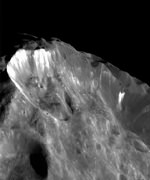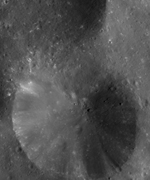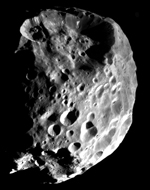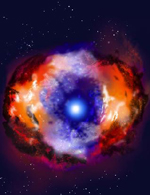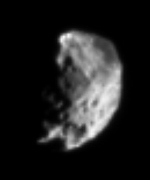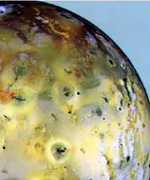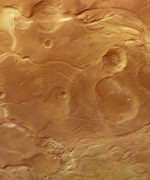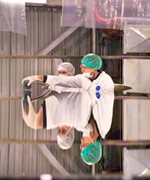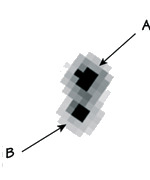
Image credit: ESO
Using ESO’s Very Large Telescope at Paranal and a suite of ground- and space-based telescopes in a four-year long study, an international team of astronomers has measured for the first time the mass of an ultra-cool star and its companion brown dwarf. The two stars form a binary system and orbit each other in about 10 years.
The team obtained high-resolution near-infrared images; on the ground, they defeated the blurring effect of the terrestrial atmosphere by means of adaptive optics techniques. By precisely determining the orbit projected on the sky, the astronomers were able to measure the total mass of the stars. Additional data and comparison with stellar models then yield the mass of each of the components.
The heavier of the two stars has a mass around 8.5% of the mass of the Sun and its brown dwarf companion is even lighter, only 6% of the solar mass. Both objects are relatively young with an age of about 500-1,000 million years.
These observations represent a decisive step towards the still missing calibration of stellar evolution models for very-low mass stars.
Telephone number star
Even though astronomers have found several hundreds of very low mass stars and brown dwarfs, the fundamental properties of these extreme objects, such as masses and surface temperatures, are still not well known. Within the cosmic zoo, these ultra-cool stars represent a class of “intermediate” objects between giant planets – like Jupiter – and “normal” stars less massive than our Sun, and to understand them well is therefore crucial to the field of stellar astrophysics.
The problem with these ultra-cool stars is that contrary to normal stars that burn hydrogen in their central core, no unique relation exists between the luminosity of the star and its mass. Indeed, luminosities and surface temperatures of ultra-cool dwarf stars depend both on their age and their mass. An older, somewhat more massive ultra-cool dwarf can thus have exactly the same temperature as a younger, less massive one.
It is therefore a basic goal of modern astrophysics to obtain independently the masses of an ultra-cool dwarf star. This is in principle possible by studying such objects that are members in a binary system.
This is precisely what an international team of astronomers has now done in a four-year long study of a binary stellar system with an ultra-cool dwarf star, using a plethora of top telescopic facilities, including ESO’s Very Large Telescope, as well as Keck I and Gemini North in Hawaii and also the Hubble Space Telescope. This system – with the telephone number name of 2MASSW J0746425+2000321 – is located at a distance of 40 light-years.
The astronomers used high-angular-resolution imaging to see both stars in the binary system and to measure their motion over a four-year period. However, this is more easily said than done, as the separation on the sky between the two stars is quite small: between 0.13 and 0.22 arcsec. This corresponds to the size of a 1-Euro coin, seen at a distance of about 25 km.
This separation is so small that it is normally not possible to differentiate the two stars due to the blurring effect of atmospheric turbulence (the “seeing”). It is therefore necessary to use the technique of adaptive optics. This wonderful method is based on the measurement of the image quality in real-time and sending corresponding corrective signals up to 100 times every second to a small deformable mirror, located in front of the detector. As the mirror continuously modifies its shape, the disturbing effect of the turbulence is neutralised. Applied at the VLT, this technique has resulted in images which are at least ten times sharper than the “seeing” and which therefore show many more details in the observed objects.
At the Very Large Telescope, the astronomers used the state-of-the-art adaptive optics NACO instrument. Says Herv? Bouy, principal author of the paper presenting the results described here: “NACO offers the possibility to work in the infrared and is therefore ideally suited for the study of ultra-cool stars, which emit most of their light in this wavelength range. With the combination of the high efficiency of NACO and the VLT, and the excellent atmospheric conditions prevailing at Paranal, we were able to achieve very sharp images of this binary stellar system, almost as good as if the telescope were located in space.”
Ultra-cool and on diet
During their four-year long study, seven different relative positions of the two components of the binary system were measured and Herv? Bouy and his co-workers were able to determine with good precision the stellar orbits. They find that the two stars revolve around each other once every 10 years and that their physical separation is only 2.5 times the distance of the Earth to the Sun – as astronomers say, 2.5 Astronomical Units. Using Kepler’s laws, it is then straightforward to derive the total mass of the system. The obtained value is less than 15 % of the mass of the Sun.
The astronomers then used the photometric data of each star obtained in several wavebands, as well as spectra obtained with the Hubble Space Telescope to study the two objects in more detail. Using the latest stellar models of the group of the Ecole Normale Sup?rieure de Lyon, they found that both stars have roughly the same surface temperature, around 1500 ?C (1800 K). For a star, this is ultra-cool indeed – by comparison, the surface temperature of the Sun is more than three times higher.
Using theoretical models, the team also found that the two stars are rather young (in astrophysical terms) – their age is between 500 and 1,000 million years only. The more massive of the two has a mass between 7.5 and 9.5% the mass of the Sun, while its companion has a mass between 5 and 7% of the solar mass.
Objects weighing less than about 7% of our Sun have been variously called “Brown Dwarfs”, “Failed Stars” or “Super Planets”. Indeed, since they have no sustained energy generation by thermal nuclear reactions in their interior, many of their properties are more similar to those of giant gas planets in our own solar system such as Jupiter, than to stars like the Sun.
The system 2MASSW J0746425+2000321 is thus apparently made up of a brown dwarf orbiting a slightly more massive ultra-cool dwarf star. It is a true “Rosetta stone” in the new field of low-mass stellar astrophysics and further studies will surely provide more valuable information about these objects in the transitional zone between stars and planets.
Original Source: ESO News Release

